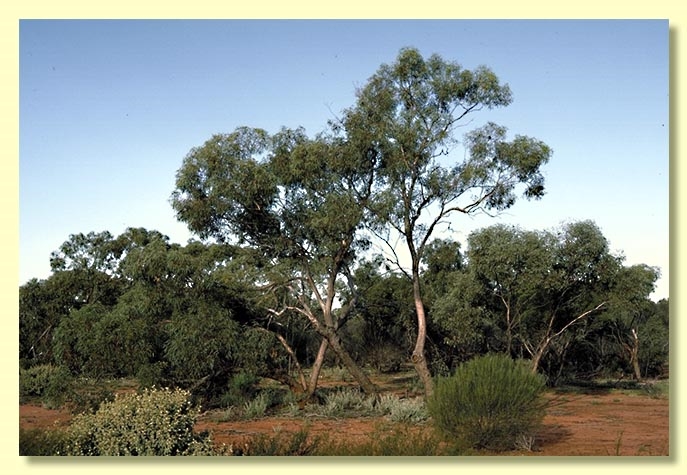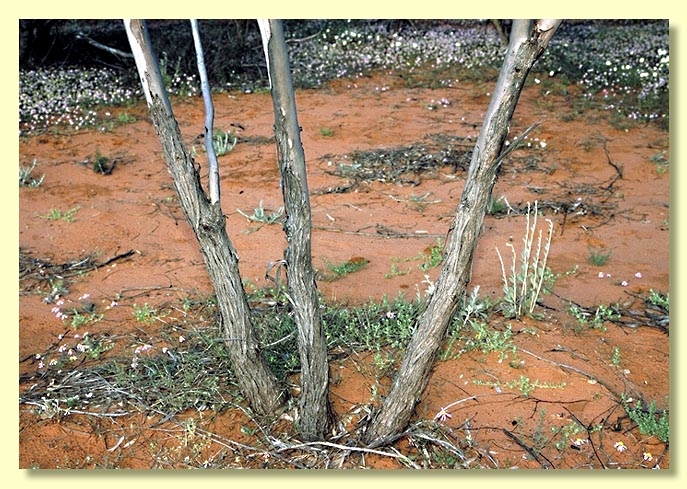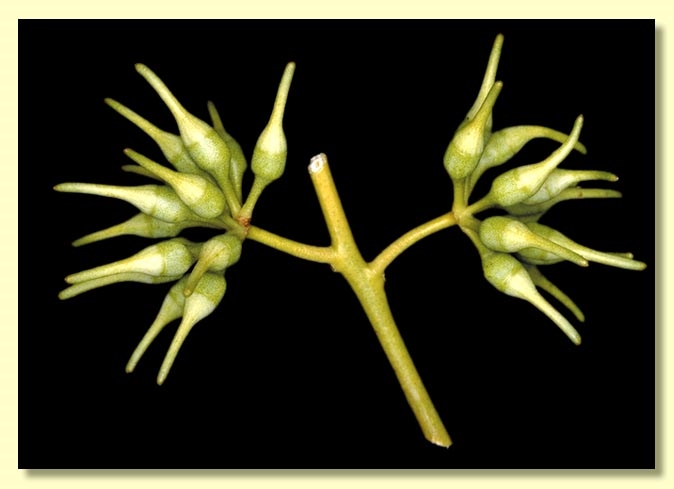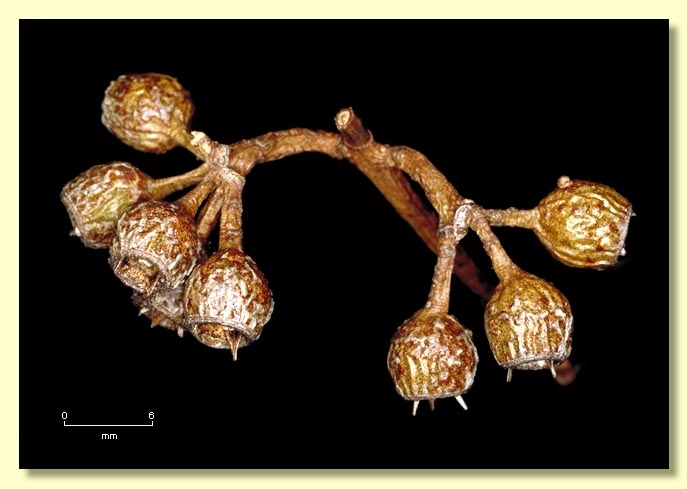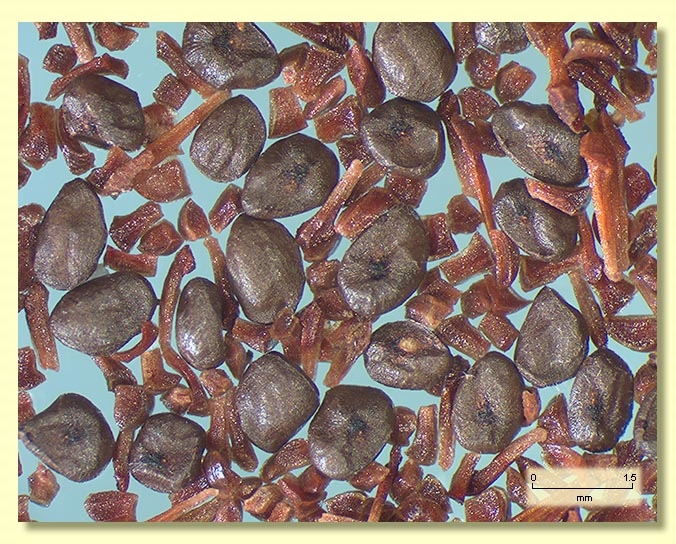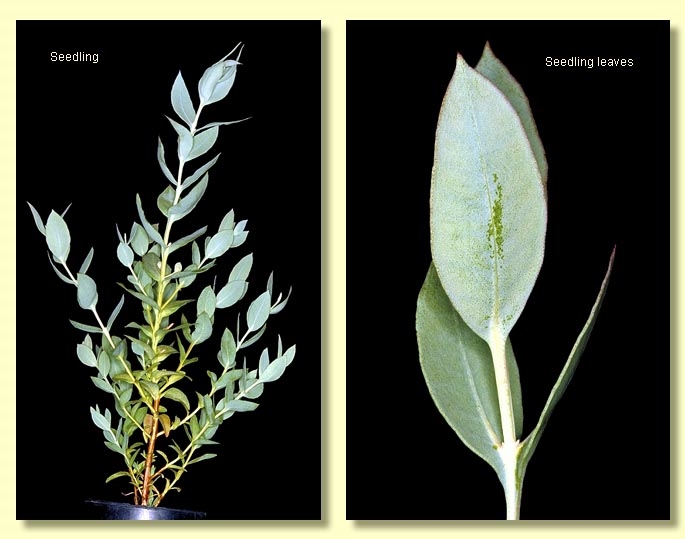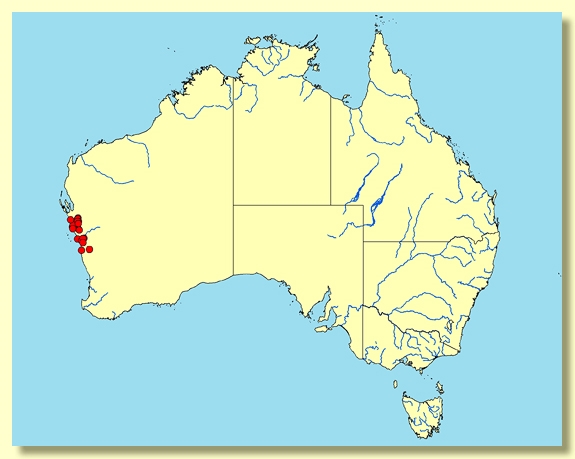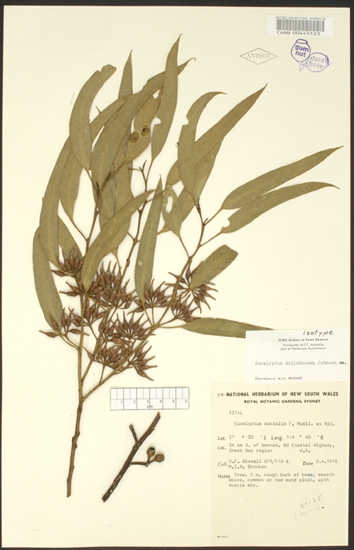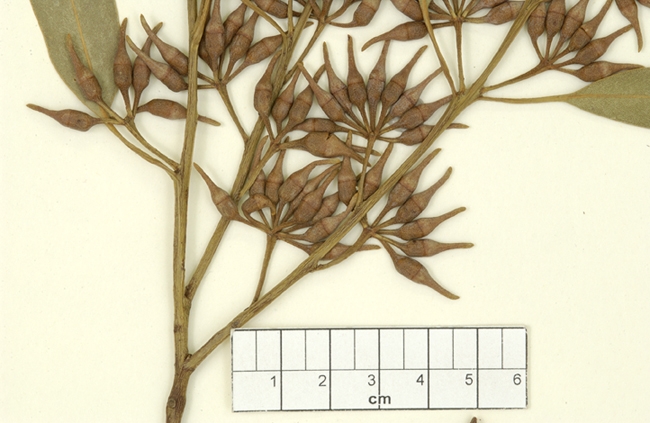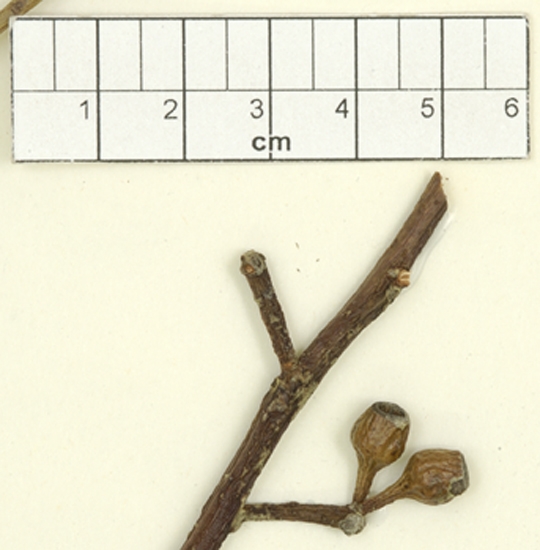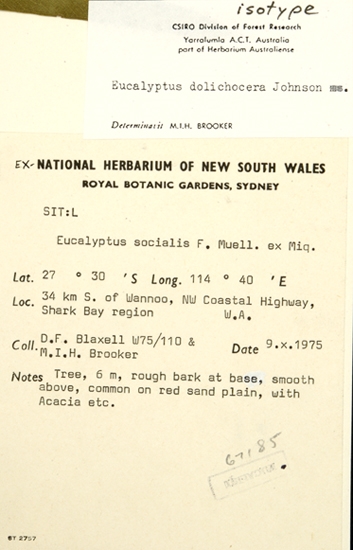Eucalyptus | Symphyomyrtus | Bisectae | Destitutae | Subulatae | Decussatae
Euclid - Online edition
Eucalyptus dolichocera
Bark rough for 2–3 m over the lower trunk, fibrous, flaky; smooth bark grey to white over orange-cream.
Branchlets lacking oil glands in the pith.
Juvenile growth (coppice or field seedlings to 50 cm): stems rounded to square in cross-section, not glaucous; leaves opposite, sessile and ovate-lanceolate at lower nodes, becoming alternate, shortly petiolate, lanceolate, 4–8 cm long, 1–3 cm wide, dull, grey-green to green.
Adult leaves alternate, petiole 1.5–2.5 cm long; blade lanceolate to falcate, 6–15 cm long; 1.2–2.3 cm wide, base usually tapering to petiole, concolorous, usually dull green to blue-green to grey-green, rarely slightly glossy, side-veins usually greater than 45° to midrib, occasionally acute, densely to very densely reticulate, intramarginal vein parallel to and just within margin, oil glands numerous and mostly intersectional.
Inflorescence axillary unbranched, peduncles (0.6)0.8–2 cm long, buds usually 9 to 13, pedicellate, pedicels 0.5–0.8 cm long. Mature buds narrowly ovoid to oblong (1.2–1.9 cm long, 0.35–0.5 cm wide), sometimes glaucous, scar present, operculum beaked or horn-shaped (0.7–1.4 cm long), stamens inflexed or irregularly flexed, often with the inner stamens inflexed and some the outer stamens erect, anthers versatile, globoid, dehiscing by lateral slits, style long, stigma tapered, locules 3 or 4, the placentae each with 4 vertical ovule rows. Flowers white to pale yellow.
Fruit pedicellate, pedicels 0.2–0.7 cm long, barrel-shaped to urceolate, 0.5–0.9 cm long, 0.5–0.8 cm wide, disc descending, valves 3 or 4, enclosed but surmounted with prominently exserted but easily broken style remnants.
Seeds grey to brown, (1.5)1.8–2.2 mm long, ovoid or depressed-ovoid, dorsal surface smooth, sometimes furrowed, hilum ventral.
Cultivated seedling not seen by the authors [cotyledons Y-shaped (bisected), seedling leaves non-decurrent, fide Dean Nicolle].
Flowering has been recorded in October, November and December.
A mallee or small tree growing north of Perth, Western Australia, from the Wannoo area. The bark is rough on the lower half of the stems, the adult leaves dull, green to blue-green to grey-green and the mature buds on long peduncles and with long attenuate opercula.
Eucalyptus dolichocera belongs in Eucalyptus subgenus Symphyomyrtus section Bisectae subsection Destitutae because the buds have two opercula, cotyledons are bisected and branchlets lack oil glands in the pith. Within this subsection E. dolichocera is part of the widespread series Subulatae which is further characterised by globoid basifixed anthers, greyish smooth seeds with shallow longitudinal furrows, and fruit with persistent exserted style remnants. The series is divided principally into four subseries based on the juvenile leaves, one with spiral, crowded seedling phyllotaxis (subseries Spirales), another with disjunct, petiolate seedling leaves (subseries Oleaginae), another with decussate and decurrent seedling leaves (subseries Decurrentes), and a fourth, to which E. dolichocera belongs, with decussate non-decurrent seedling leaves (subseries Decussatae).
In subseries Decussatae, E. dolichocera is distinctive for the rough bark, the very long attenuate opercula and the barrel-shaped to urceolate fruit.
It may be confused with E. moderata. Both species are very similar in adult morphology. E. moderata belongs to subseries Decurrentes, with decurrent seedling leaves.

